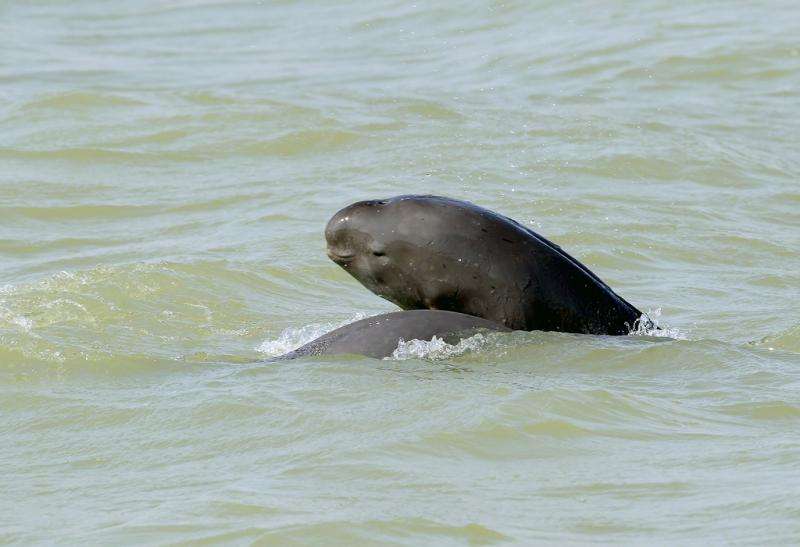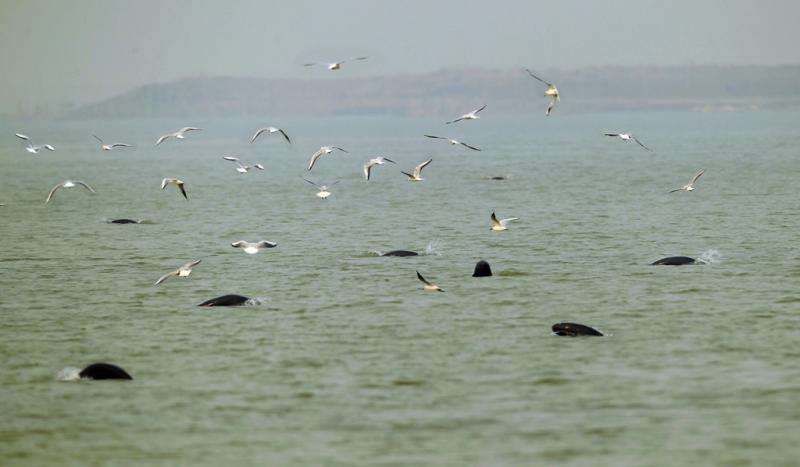Large freshwater species among those most threatened with extinction on the planet

Freshwater megafauna such as river dolphins, crocodilians and sturgeons play vital roles in their respective ecosystems. In a recent scientific publication, researchers of the Leibniz-Institute of Freshwater Ecology and Inland Fisheries (IGB) in Berlin have teamed up with international colleagues to illustrate the factors that currently threaten these large vertebrates. The authors also call for a more comprehensive assessment on these large freshwater animals and for a more targeted conservation plan. Also, a wider range of freshwater species and freshwater ecosystems suffering from biodiversity decrease have the potential to benefit from such megafauna-based actions.
Many large aquatic vertebrates, referred to as freshwater megafauna, cover long distances between their breeding and feeding grounds. To ensure their safe passage, they are dependent on free-flowing waters. However, this makes them vulnerable to the increasing fragmentation of river catchments caused by damming. The Russian sturgeon, for example, has lost 70 per cent of its spawning grounds in the Caspian Sea basin and its entire Black Sea basin spawning grounds over the last 60 years due to dam construction. The boom in dam construction also affects many other species, such as the Amazonian manatee, the Ganges river dolphin and the Mekong giant catfish – these species are now classified as threatened. "The fragmentation of habitats is one of the central threats to freshwater megafauna, as well as overexploitation" explained Fengzhi He. The IGB researcher is the lead author of the study on the disappearance of large vertebrates from rivers and lakes, published recently in WIREs Water. According to The International Union for Conservation of Nature (IUCN) Red List of Threatened Species, more than half of the world's large-bodied vertebrates weighing more than 30 kg that live in freshwater ecosystems are threatened.
Yet, freshwater megafauna species play key roles in their respective ecosystems: owing to their size, most are at the top of the food chain, meaning that a large proportion of creatures in the local ecosystem would be affected by their extinction. The mode of life of the Eurasian beaver and the North American beaver, for example, induces them to shape entire river courses, affecting not only biochemical and hydrological processes, but also in-stream and riparian assemblages; in the Everglades, the American alligator creates and maintains small ponds, providing habitats for a large number of plants and smaller animals. "The importance of freshwater megafauna for biodiversity and humans cannot be overstated," stressed Fengzhi He. Together with colleagues from IUCN, the University of Tübingen and Queen Mary University of London, Fengzhi He describes in this publication which factors pose threats to freshwater megafauna. Besides the obstruction and fragmentation of water bodies following dam construction, these factors include overexploitation, environmental pollution, habitat destruction, species invasion and the changes associated with climate change.
According to the authors, megafauna species are highly susceptible to external factors owing to their long lifespan, large body size, late maturity and low fecundity. Despite the fact that many megafauna species are under great threat, they have been largely neglected in previous research and conservation actions. Fengzhi He and his co-authors call for research focusing on the distribution patterns, life history and population dynamics of freshwater megafauna. Freshwaters are among the most endangered ecosystems on the planet, where biodiversity is declining faster than in marine and terrestrial realms. For this reason, it is all the more important to develop sustainable nature conservation strategies for freshwater ecosystems and their megafauna.

More information: Fengzhi He et al. Disappearing giants: a review of threats to freshwater megafauna, Wiley Interdisciplinary Reviews: Water (2017). DOI: 10.1002/wat2.1208
Provided by Forschungsverbund Berlin e.V. (FVB)














